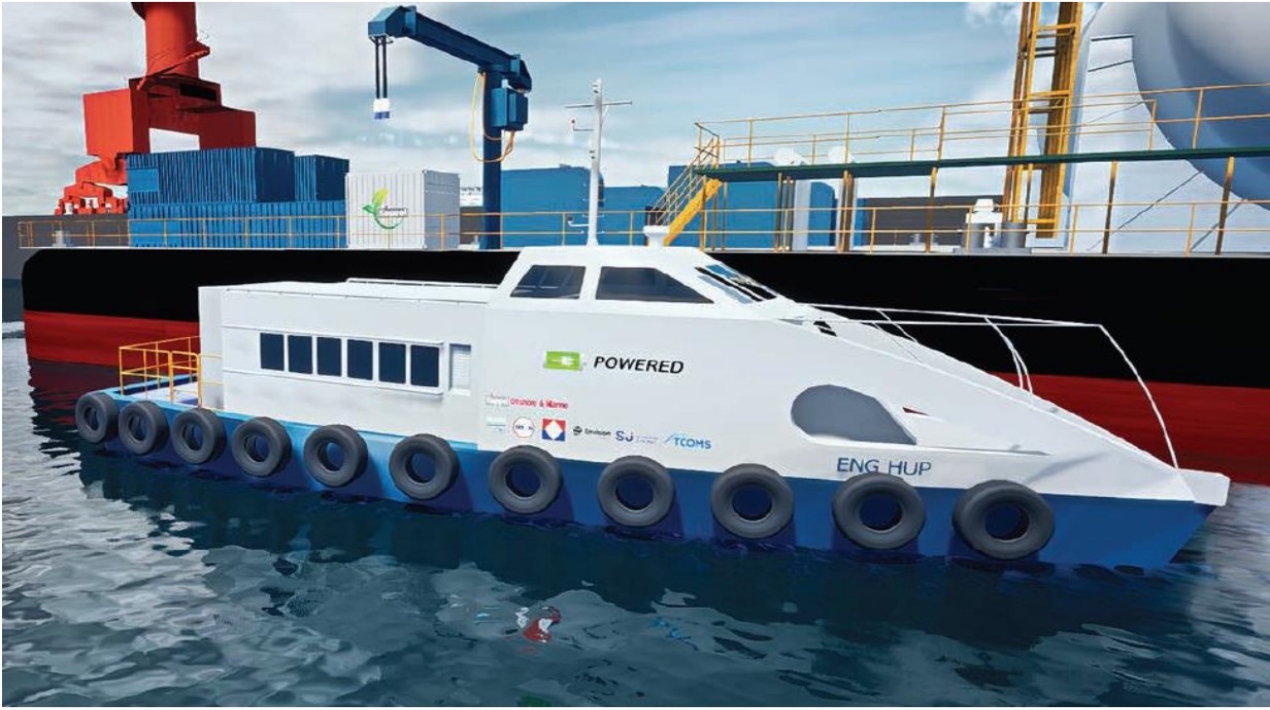
The Singapore Maritime and Port Authority (MPA) has begun planning and design work for Tuas Port Phase 3. Tuas Port is being developed in four phases, with the reclamation works for Phase 3 projected to be completed in the mid-2030s.
MPA will organise a tripartite committee in 2023 with port operator PSA Singapore, government agencies, industry partners, and unions to co-create alternative mobility choices for port workers and users to improve Tuas Port’s accessibility.
Tuas Port will be the world’s largest completely automated port when completed in the 2040s, with a handling capacity of 65 million twenty-foot equivalent units (TEUs), nearly doubling the handling volume of 37.3 million TEUs in 2022.
In addition, the MPA and Infocomm Media Development Authority (IMDA) signed a Memorandum of Understanding (MoU) in August 2022 to provide full maritime 5G coverage in the major anchorages, fairways, terminals, and boarding grounds by mid-2025, to further maritime digitalisation and the development of the future concept of operations.
To support the onshore 5G communication infrastructure, twelve maritime 5G base stations will be installed. By 2023, three of the base stations will be prepared to facilitate the testing and development of fresh digital applications including telemedicine, delivery drones, digital bunkering, and remotely assisted pilotage advisory and by 2025, the last nine base stations will be installed.
The MPA is creating a Next Generation Vessel Traffic Management System (NGVTMS) with artificial intelligence (AI) capabilities to replace the current Vessel Traffic Information System (VTIS) to significantly improve vessel navigational safety and efficiency of the port.
Further, Phase 2 of digitalPORT@SG™ will be launched by MPA this year after Phase 1 was successfully implemented as a one-stop platform for port entry and departure in 2020. This will give port stakeholders real-time information to support just-in-time vessel arrivals to terminals.
With this, to test a data-sharing programme focused on supply procurement, fulfilment, and lighterage logistics, MPA will collaborate with Jurong Port, Singapore Trade Data Exchange (SGTraDex), and other partners. This initiative is part of SGTraDex’s ship supplies and lighterage optimisation use case.
By 2025, the MPA will establish the Maritime Cyber Assurance and Operations Centre (MCAOC) to provide real-time security monitoring and disseminate information to mitigate cyber threats, advise on system recovery and post-incident measures, and facilitate cyber threat information-sharing among maritime stakeholders with digital systems, such as port and terminal operators, shipping lines, and marine service providers.
Further, in support of Singapore’s 2050 national net-zero aim, MPA will set a target for the harbour craft and pleasure craft sectors to achieve net-zero emissions by 2050. To complete this transformation, beginning in 2030, all new harbour ships operating in the port waters will be required to be totally electric, capable of using B100 biofuel, or compatible with net-zero fuels such as hydrogen.
To prepare Singapore for a multi-fuel bunkering future, the MPA produced the world’s first marine biofuel provisional standard in conjunction with industry and researchers for biofuel blends of up to 50%, or B50.
MPA and the Port of Rotterdam agreed to create the world’s longest “Green and Digital Shipping Corridor (GDSC)” in August 2022 aims to test digital solutions, encourage investment in green infrastructure, and provide enablers to expedite low and zero-carbon shipping. MPA has also implemented many initiatives to attract and create a constant stream of maritime personnel with the necessary skills and competence as the industry evolves.
















